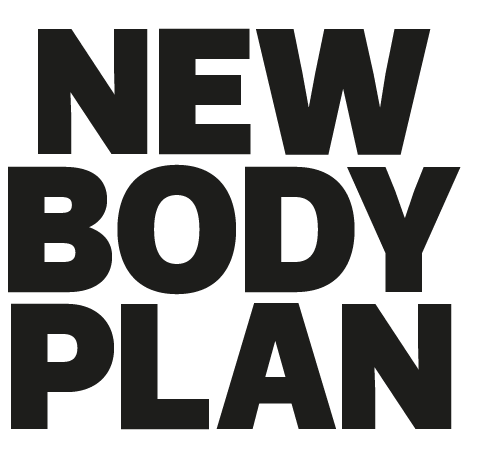How to use breathwork to beat stress
Most of us never give our breathing a second thought so use my simple guide to breathwork to harness the power of each and every breath you take to kick stress to the curb and start living a healthier, happier and chilled-out life, says New Body Plan’s Joe Warner
Every day, without a second thought, you take about 20,000 breaths. And that’s not including doing any heart-raising activities such as lifting weights or high-intensity cardio.
This unconscious tide of inhales and exhales fuels your very existence, and yet, rarely features in your conscious thought. But what if harnessing the power of this everyday act could unlock a pathway to enhanced fitness, health, and happiness? Welcome to the world of breathwork.
The practice reimagines respiration, transforming each breath into a potent tool for wellness. So whether you’re a seasoned health enthusiast or an intrigued newcomer, diving into the intricacies of breathwork could offer a breath of fresh air to your wellbeing journey. Here’s what you need to know to live the chilled out life you want!
TL;DR Breathwork involves a conscious manipulation of one’s breathing patterns to lower stress and enhance physical, emotional, and mental health. A diverse range of techniques exist, each offering distinct benefits that span from alleviating stress to enhancing physical endurance.
Find your perfect fat-loss plan!
Take the New Body quiz!
What exactly is breathwork and how important is it?
Breathwork is a broad umbrella term encompassing various practices in which one intentionally alters their breathing patterns. Ranging from slow, measured inhales and exhales to rapid, intense breathwork sessions, the practices are as diverse as their impacts.
The importance of breathwork in our daily lives cannot be overstated. As the conductor of our body’s symphony, our breath influences everything from our heart rate to our mood. Our respiratory patterns can even serve as a conduit to deeper self-awareness and mindfulness. A study in Frontiers in Psychiatry elaborates: “Breathwork can positively impact aspects of physical, mental, and emotional health, and increase overall wellbeing.” With such a breadth of benefits, it’s little wonder why it’s is taking centre stage in the wellness sphere.
What impact does breathwork have on my physical wellbeing?
The effects on physical health are both potent and wide-reaching. It can bolster cardiovascular function, fortify the immune system, boost energy levels, and stimulate detoxification. By improving oxygen supply to our muscles and enhancing circulation, breathwork also augments our capacity for physical exertion and aids recovery.
Moreover, research shows that it can significantly lower blood pressure, benefiting cardiovascular health. A study in the Breathe journal explicates: “Slow breathing has been shown to be effective in reducing blood pressure.” The physical benefits, thus, extend far beyond the immediate feeling of relaxation, fostering long-term health and vitality.
And what about its influence on my mental health?
Breathwork can serve as a powerful tool in managing mental health. By aiding stress management, promoting relaxation, and facilitating emotional release, it can markedly improve psychological wellbeing. Conscious control of our breath helps us switch gears from the “fight or flight” stress response to the more peaceful “rest and digest” state, contributing to mental tranquillity and recovery.
A study published in the Journal of Clinical Psychology corroborates this: “Breathwork has been found to reduce symptoms of anxiety and depression, indicating its potential role as a therapeutic tool in mental health treatment.” In short, it’s an empowering self-care practice that fosters mental resilience.
How do I begin my breathwork journey?
Initiating a breathwork practice can be as straightforward as setting aside a few quiet moments in your day. Although guidance from a certified practitioner can be beneficial, many techniques can be practised independently. It’s advisable to commence with uncomplicated techniques, like box breathing or diaphragmatic breathing, gradually progressing to more advanced practices.
What are some popular types of breathwork?
Breathwork manifests in a multitude of forms, each boasting unique practices and objectives. Holotropic Breathwork, for instance, seeks to attain altered states of consciousness, often used as a pathway to self-discovery. Pranayama, a cornerstone of yogic tradition, focuses on controlling prana, or life force, via the breath. The Wim Hof Method, popularised by its eponymous creator, involves a sequence of controlled hyperventilation followed by breath retention, often associated with resilience and endurance training.
Is breathwork suitable for everyone?
While breathwork is broadly safe and beneficial, certain groups should exercise caution. Individuals with cardiovascular issues, pregnant women, and those with severe mental health disorders should consult a healthcare provider before incorporating breathwork into their routine. This ensures that the practice is beneficial and safe for each individual’s unique circumstances.
How to start – and get better – at breathwork
-
- Start simple: Begin your breathwork journey with uncomplicated techniques like box breathing or diaphragmatic breathing. These foundational practices help cultivate breath awareness and pave the way for more complex techniques.
- Consistency is key: As with any practice, consistency fosters growth. Establish a regular breathwork routine, and witness the cumulative benefits over time.
- Use breathwork for stress management: Incorporate breathwork into your stress management toolkit. Techniques such as coherent breathing can instil a sense of calm and mitigate anxiety.
- Enhance your training with breathwork: Integrate breathwork into your fitness routine to amplify physical performance. Techniques like breath-hold training can improve cardiovascular health and bolster endurance.
- Seek professional advice: For more intense or intricate breathwork practices, consider seeking the expertise of a certified breathwork practitioner. This ensures you’re practising safely while reaping the full benefits.
Find your perfect fat-loss plan!
Take the New Body quiz!
Train for your body type for your ultimate body transformation

